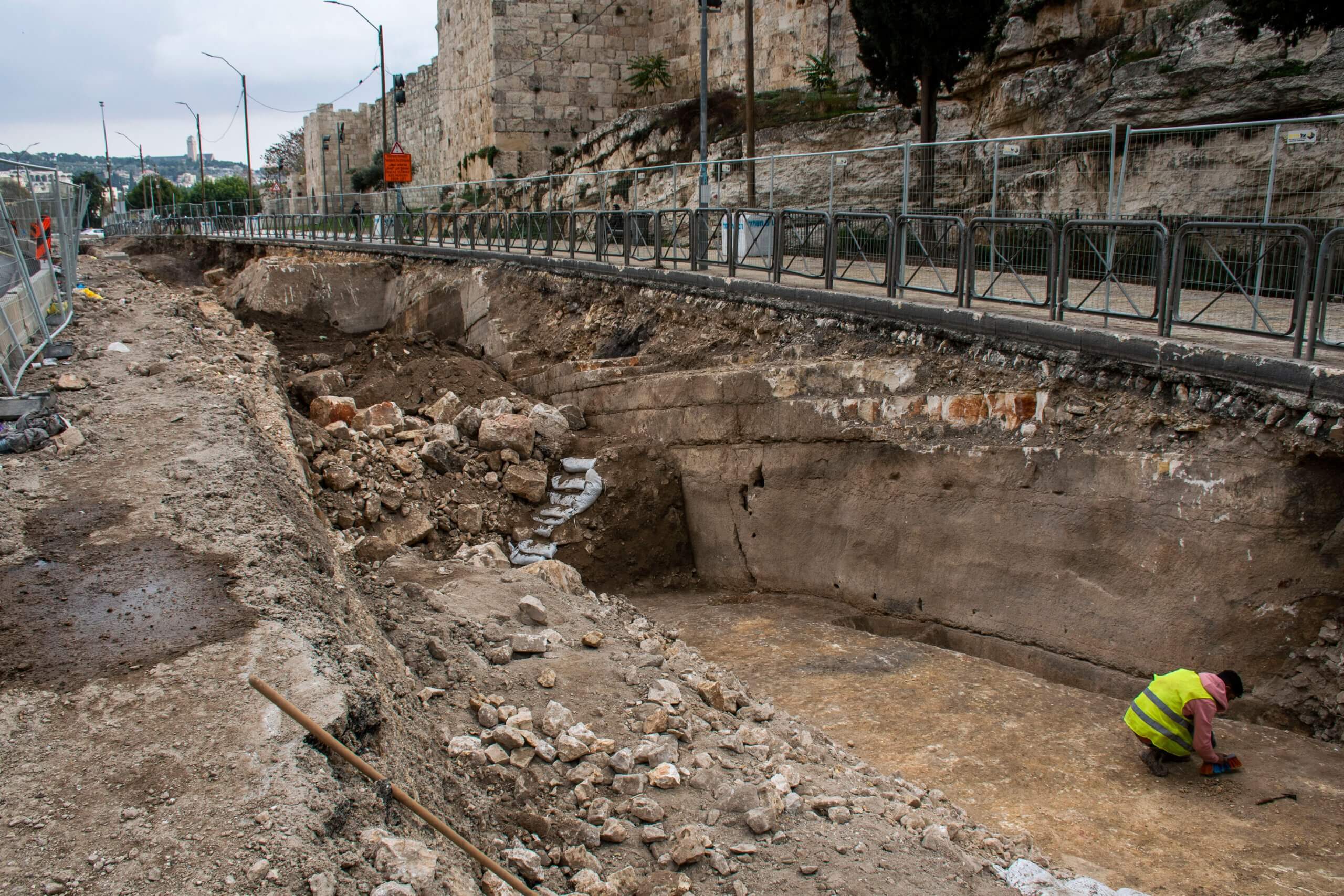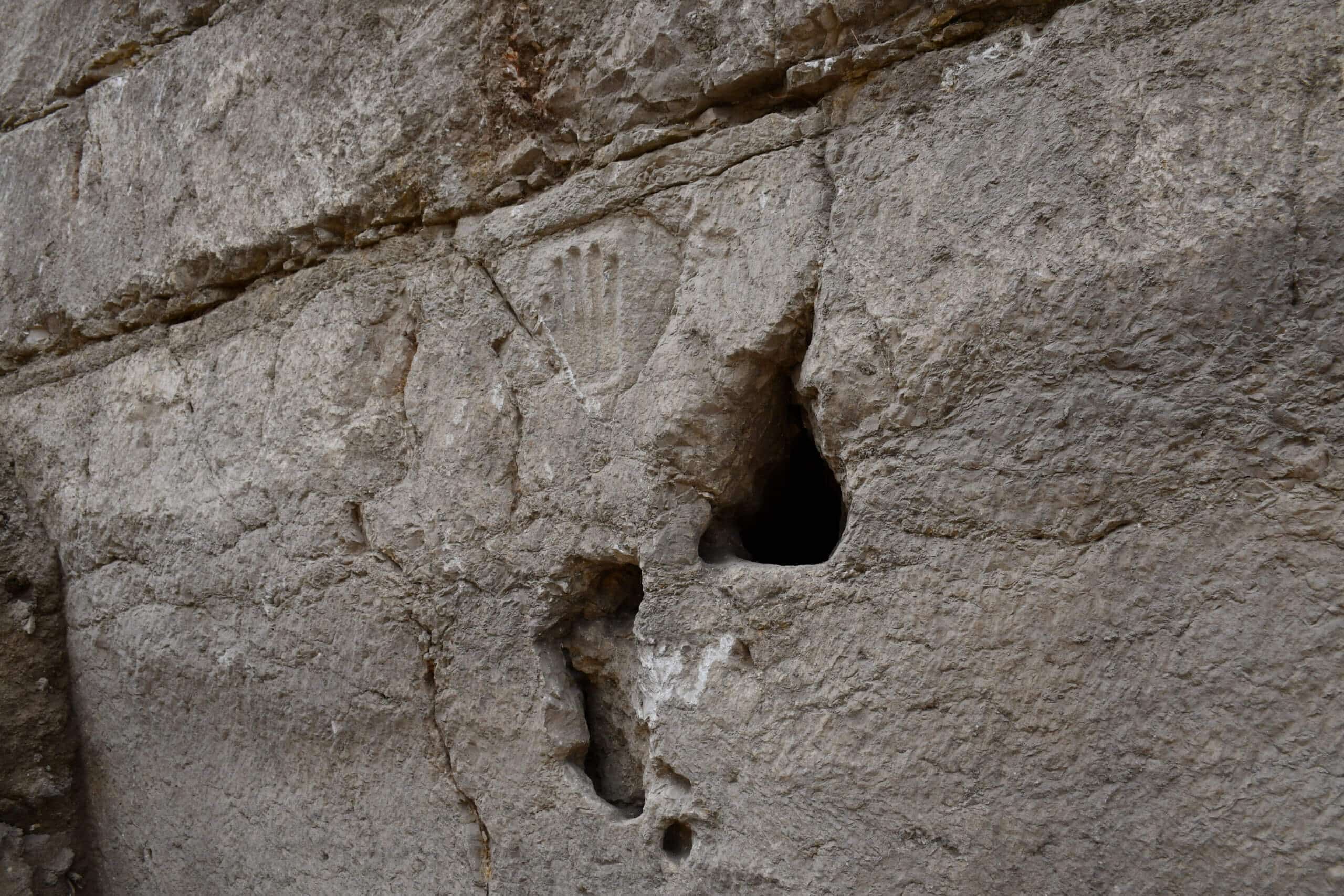The new parts of the defense system on the walls of Old Jerusalem against Crusader attacks were discovered during archaeological excavations by the Antiquities Authority on Sultan Suleiman Street, prior to the laying of infrastructure at the initiative of the Jerusalem Municipality through the Moriah Jerusalem Development Company

Fragments of the fortifications of the ancient Jerusalem walls and a mysterious handprint carved into the rock were uncovered in archaeological excavations by the Antiquities Authority on Sultan Suleiman Street in Jerusalem. The excavations, which were done in preparation for infrastructure and development works by the Moriah Jerusalem Development Company, revealed sections of the deep moat canal that surrounded the city in order to protect it, beginning in the 10th century AD, and possibly even earlier. In one of the sections, a carved palm print was discovered in the wall of the trench, the interpretation of which is unknown.
Sultan Suleiman Street, along which the Nablus Gate and the Flower Gate are located, runs adjacent to the ancient northern wall of Jerusalem.
Zubair Adavi, director of the excavation on behalf of the Antiquities Authority, recently dug the moat that is just below the street. According to Adavi, "People don't know, but this busy road goes over a huge moat." In fact, it is a huge channel, cut in the rock, which is at least 10 m wide and 2 to more than 7 m deep at the deepest point. The moat canal dates back to about 1,000 years ago, starting in the 10th century AD, and it surrounds the entire old city like a ring. Her job was to prevent an enemy who was encroaching on the city from approaching the wall and breaking in. People know from movies the moat from fortresses and castles in Europe - where it is usually full of water. Here it was dry, but gentle - due to its depth and width, it was a serious obstacle that slowed down the movement of the soldiers."
The impressive walls of Jerusalem and its gates that we see today were built in the middle of the 16th century by the Turkish Sultan Suleiman the First. "The walls that stood here in the Middle Ages - from the 10th century AD, were much stronger, and even before that a huge moat surrounded the city walls." says Dr. Amit Ram, Director of the Jerusalem Region at the Antiquities Authority. "In an era of knightly battles, swords and arrows and charging horsemen, Jerusalem's fortifications were formidable and sophisticated, and they included a number of walls and elements designed to stop the large armies that stormed the city," he says.

"Whoever wanted to conquer ancient Jerusalem in the Middle Ages had to pass through a deep moat and two thick walls. All the while, the defenders of the city rained down fire and brimstone from the lines of the walls. It was real hell!! And if that's not enough, the city's fortifications included hidden tunnels, which were also uncovered by the archaeologists of the Antiquities Authority in previous projects. From these tunnels, the defenders of the city emerged. They beat the enemy, and in the blink of an eye, disappeared back into the city - through those elaborate caves."
Dr. Ram elaborates: "The historians who accompanied the First Crusade describe how the Crusaders arrived here, in July 1099. They stood exhausted in front of the huge moat that we uncovered, and only after five weeks were they able to cross it, with trickery and deceit and at a heavy blood price, while absorbing Heavy fire from both the Muslim and Jewish defenders of the city."
During the excavations, an ancient mysterious handprint carved into the rock was discovered on the side of the moat. At this point, the researchers have not yet deciphered the mystery of the quarry. "We don't know if the handprint was carved as an act of vandalism, a boring prank, or - does it symbolize something and actually point in some direction?" say the researchers.
According to Eli Escozido, director of the Antiquities Authority: "Many dreamed and fought for Jerusalem. When you stand in front of these archaeological findings, you can understand the magnitude of the events and upheavals that this city went through. You can imagine the commotion of the battle and almost smell the plumes of smoke. Almost every day we reveal a piece of the glorious history of Jerusalem, and this time - we witness its rich military history. We will make every effort to make it accessible and present it to the public."
More of the topic in Hayadan:
